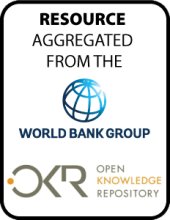/ library resources
Showing items 1 through 9 of 18.The Bhutan Forest Note articulates opportunities for supporting Bhutan's sustainable development aspirations, including its constitutional commitment to maintain at least 60 percent of the country's land area under forest cover and to better respond or prepare for vulnerabilities such as climate
Identification of Land Quality Indicators (LQIs) is a key requirement of sustainable land management. They are required to assess, monitor, and evaluate changes in the quality of land resources and environmental impacts.
Over the coming decades, land policy and
administration, for urban as well as rural areas, will be
critical for Ethiopia's development. The vast majority
of people making up the Federal Democratic Republic of
Interest in farmland is rising. And,
given commodity price volatility, growing human and
environmental pressures, and worries about food security,
this interest will increase, especially in the developing
A Country Environmental Analysis (CEA)
is a World Bank analytical tool used to integrate
environmental issues into development assistance strategies,
programs, and projects. To that end, the CEA synthesizes
During the Fifth Replenishment Phase of
the Global Environment Facility (GEF-5), portfolio
monitoring and learning review were introduced as key
components of knowledge management in the GEF Secretariat.
This report summarizes the findings of
the Uganda Sustainable Land Management Public Expenditure
Review (SLM PER). The SLM PER was undertaken to achieve six
main objectives: (i) establish a robust data base on
Land is a key economic resource inextricably linked to access to, use of and control over other economic and productive resources.
Paginação
Land Library Search
Through our robust search engine, you can search for any item of the over 73,000 highly curated resources in the Land Library.
If you would like to find an overview of what is possible, feel free to peruse the Search Guide.





